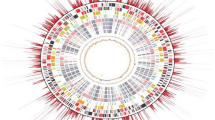Abstract
Orientia tsutsugamushi, an obligatory intracellular bacterium, is the causative agent of scrub typhus. The disease is histopathologically characterized by inflammatory manifestations, indicating that orientiae induce mechanisms that amplify the inflammatory response. Here we investigated the transcriptional response of tumor necrosis factor alpha (TNF-α) gene and the host cell responses of nuclear factor-kappa B (NF-κB) and mitogen-activated protein kinases (MAPKs) to O. tsutsugamushi. Induction of the TNF-α gene was not blocked by a eukaryotic protein synthesis inhibitor cycloheximide, suggesting that de novo synthesis of host cell protein is not required for this transcriptional response. The induction of TNF-α mRNA by O. tsutsugamushi was not blocked by the inhibitors of NF-κB activation. Inactivation of Orientia by heat abolished both MAPK activation and TNF-α production, whereas treatment of host cells with cytochalasin D impaired neither NF-κB and MAPK activation nor TNF-α production. In conclusion, our data suggest that O. tsutsugamushi-stimulated TNF-α production and MAPK activation requires cellular attachment by viable orientiae but not bacterial internalization into the host cells.





Similar content being viewed by others
References
Akira S, Takeda K (2004) Toll-like receptor signalling. Nat Rev Immunol 4:499–511
Allen AC, Spitz S (1945) A comparative study of the pathology of scrub typhus (tsutsugamushi disease) and other rickettsial disease. Am J Pathol 21:603–681
Beutler B, Cerami A (1986) Cachectin and tumor necrosis factor as two sides of the same biological coin. Nature 320:584–588
Burnett JW (1980) Rickettsioses: a review for the dermatologist. J Am Acad Dermatol 2:359–373
Chi WC, Huang JJ, Sung JM, Lan R, Ko WC, Chen FF (1997) Scrub typhus associated with multiorgan failure: a case report. Scand J Infect Dis 29:634–635
Cho NH, Seong SY, Huh MS, Han TH, Koh YS, Choi MS, Kim IS (2000) Expression of chemokine genes in murine macrophage infected with Orientia tsutsugamushi. Infect Immun 68:594–602
Dumitru CD, Ceci JD, Tsatsanis C, Kontoyiannis D, Stamatakis K, Lin JH, Patriotis C, Jenkins NA, Copeland NG, Kollias G, Tsichlis PN (2000) TNF-α induction by LPS is regulated posttranscriptionally via a Tpl2/ERK-dependent pathway. Cell 103:1071–1083
Falvo JV, Uglialoro AM, Brinkman BMN, Merika M, Parekh BS, Tsai EY, King HC, Morielli AD, Peralta EG, Maniatis T, Thanos D, Goldfeld AE (2000) Stimulus-specific assembly of enhancer complexes on the tumor necrosis factor alpha gene promoter. Mol Cell Biol 20:2239–2247
Geng P, Jerrells TR (1994) The role of tumor necrosis factor in host defense against scrub typhus rickettsiae. I. Inhibition of growth of Rickettsia tsutsugamushi, Karp strain, in cultured murine embryonic cells and macrophages by recombinant tumor necrosis factor-alpha. Microbiol Immunol 38:703–711
Han J, Brown T, Beutler B (1990) Endotoxin-responsive sequences control cachectin/tumor necrosis factor biosynthesis at the translational level. J Exp Med 171:465–475
Iwasaki H, Tskada N, Nakamura T, Ueda T (1997) Increased levels of macrophage colony-stimulating factor, gamma interferon, and tumor necrosis factor alpha in sera of patients with infection. J Clin Microbiol 335:3320–3322
Kim MK, Kang JS (2001) Orientia tsutsugamushi suppresses the production of inflammatory cytokines induced by its own heat-stable component in murine macrophages. Microb Pathog 31:145–150
Koh YS (2001) Expression of chemokine and tumor necrosis factor alpha genes in murine peritoneal macrophages infected with Orientia tsutsugamushi. J Microbiol 39:186–194
Koh YS, Yun JH, Seong SY, Choi MS, Kim IS (2004) Chemokine and cytokine production during Orientia tsutsugamushi infection in mice. Microb Pathog 36:51–57
Kontoyiannis D, Pasparakis M, Pizarro TT, Cominelli F, Kollias G (1999) Impaired on/off regulation of TNF biosynthesis in mice lacking TNF AU-rich elements: implications for joint and gut-associated immunopathologies. Immunity 10:387–398
Kotlyarov A, Neininger A, Shubtert C, Eckert R, Birchmeier C, Volk HD, Gaestel M (1999) MAPKAP kinase 2 is essential for LPS-induced TNF-α biosynthesis. Nat Cell Biol 1:94–97
Kracht M, Saklatvala J (2002) Transcriptional and post-transcriptional control of gene expression in inflammation. Cytokine 20:91–106
Kruys V, Kemmer K, Shakov A, Jongeneel V, Beutler B (1992) Constitutive activity of the TNF promoter is canceled by the 3′-UTR in nonmacrophage cell lines: a trans-dominant factor overcomes this suppressive effect. Proc Natl Acad Sci USA 89:673–677
Lin WW, Hsu YW (2000) Cycloheximide-induced cPLA2 activation is via the MKP-1 down-regulation and ERK activation. Cell Signal 12:457–461
Medzhitov R, Preston-Hurlburt P, Janeway CA Jr (1997) A human homologue of the Drosophila Toll protein signals activation of adaptive immunity. Nature 388:394–397
Ng FK, Oaks SC Jr, Lee M, Groves MG, Lewis GE Jr (1985) A scanning and transmission electron microscopic examination of Rickettsia tsutsugamushi-infected human endothelial, MRC-5, and L-929 cells. Jpn J Med Sci Biol 38:125–139
Rikihisa Y, Ito S (1979) Intracellular localization of Rickettsia tsutsugamushi in polymorphonuclear leukocytes. J Exp Med 150:703–708
Rikihisa Y, Ito S (1982) Entry of Rickettsia tsutsugamushi into polymorphonuclear leukocytes. Infect Immun 38:343–350
Roux PP, Blenis J (2004) ERK and p38 MAPK-activated protein kinases: a family of protein kinases with diverse biological functions. Microbiol Mol Biol Rev 68:320–344
Vaddi K, Keller M, Newton RC (1997) The chemokine FactsBook. Academic Press, New York
Yun JH, Koh YS, Lee KH, Hyun JW, Choi YJ, Jang WJ, Park KH, Cho NH, Seong SY, Choi MS, Kim IS (2005) Chemokine and cytokine production in susceptible C3H/HeN mice and resistance BALB/c mice during Orientia tsutsugamushi infection. Microbiol Immunol 49:551–557
Yun JH, Koo JE, Koh YS (2009) Mitogen-activated protein kinases are involved in tumor necrosis factor alpha production in macrophages infected with Orientia tsutsugamushi. Microbiol Immunol 53:349–355
Acknowledgments
This work was supported by the research grant from the Chuongbong Academic Research Fund of the Cheju National University in 2006.
Conflict of interest
The authors declare that they have no conflict of interest.
Author information
Authors and Affiliations
Corresponding author
Rights and permissions
About this article
Cite this article
Yun, JH., Koo, JE. & Koh, YS. Mitogen-activated protein kinases and tumor necrosis factor alpha responses of macrophages infected with Orientia tsutsugamushi . World J Microbiol Biotechnol 25, 2157–2164 (2009). https://doi.org/10.1007/s11274-009-0120-5
Received:
Accepted:
Published:
Issue Date:
DOI: https://doi.org/10.1007/s11274-009-0120-5




